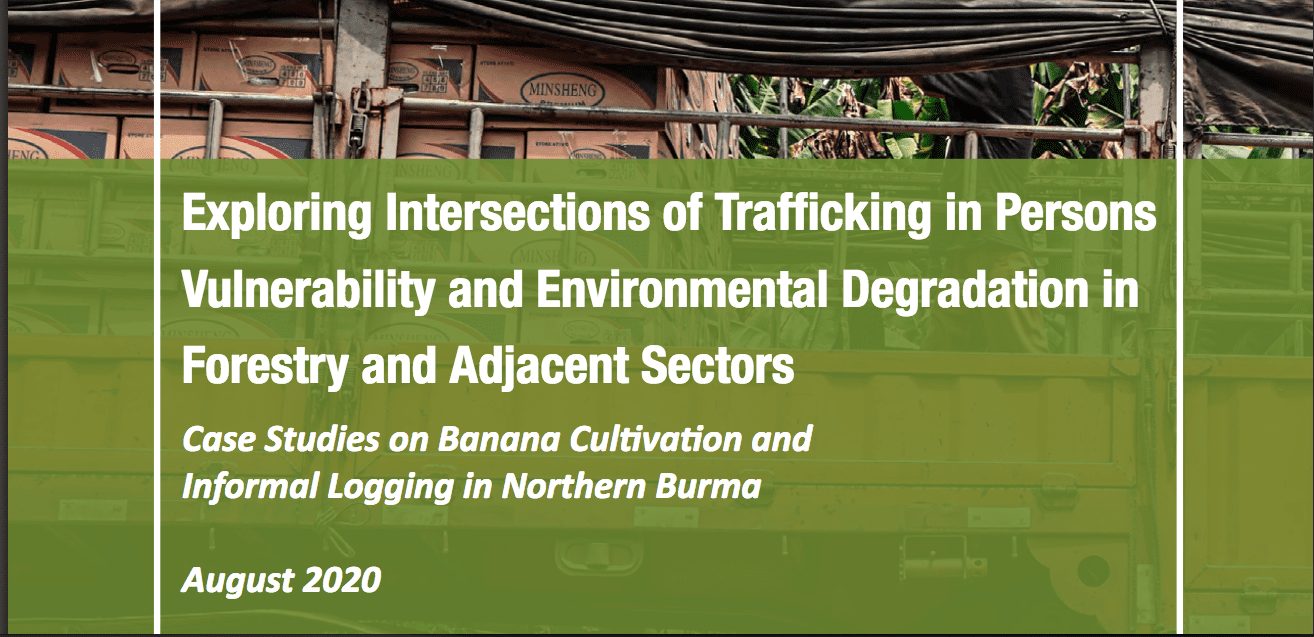
Exploring Intersections of Trafficking in Persons Vulnerability and Environmental Degradation in Forestry and Adjacent Sectors
Previous research in the field of human rights and development has examined how the use of exploited labor – including labor as the result of human trafficking – can contribute to deforestation. There is a parallel field of literature that documents the impact that environmental degradation and deforestation can have on human populations. What both of these spheres lack, however, is documentation of the specific patterns of labor exploitation, human trafficking, and child labor experienced by workers directly involved in forestry and/or adjacent sectors, as well as the means by which deforestation can create vulnerabilities to human trafficking.
The following executive summary presents findings from two case studies conducted in Burma on the intersection of labor, environmental, and social risks in sectors linked to deforestation. To ground an understanding of the intersection of human vulnerability and deforestation within the specificities of the political, social, and economic contexts of Burma, Verité carried out original research in two different sectors: large scale agribusiness in the form of banana plantations in Kachin State and informal logging in northern Burma. This research in Burma is part of a larger Verité exploratory project to examine the intersection between environmental degradation and vulnerability to trafficking in persons and other labor abuses through a set of case studies in different sectors and geographies.
In both case studies, Verité conducted interviews with workers and expert informants, triangulating information with thorough literature reviews. A qualitative approach to this research, undertaken by culturally competent researchers, allowed for holistic description of the nature of risk to trafficking in persons and associated forced labor or other labor abuses, and the relationship of those abuses to the local environmental context encountered by communities. It allowed interviewed workers and experts to describe, in their own words, the factors that pushed them to seek their jobs, the factors that compelled them to accept exploitive working conditions, and the links to implications of environmental degradation on their community’s survival.
Read more here.
